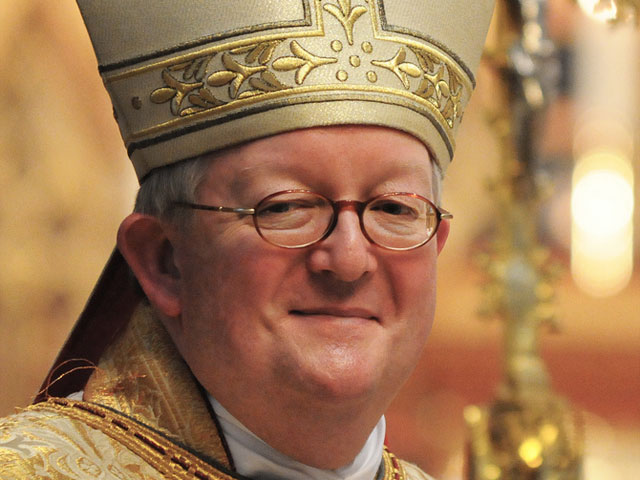The 2010 bankruptcy of Crystal Cathedral Ministries, founded in 1955 by the Rev. Robert H. Schuller atop a drive-in movie theater’s concession stand, stunned much of the church world.
One year later, the Roman Catholic Diocese of Orange bid $57.5 million for the Crystal Cathedral campus itself, a sprawling facility in the city of Garden Grove, which sits at the heart of Orange County, California. Architects Richard Neutra and Philip Johnson designed the two main buildings on the site — Neutra’s Arboretum and Johnson’s Crystal Cathedral, now renamed Christ Cathedral. The news these days is that the latter is undergoing massive and much-discussed renovations to transform the space from what was, essentially, a hyper-Protestant television ministry’s epicenter into a specifically Catholic liturgical space.
The Los Angeles Times — under the awkward headline, “Changing faiths at the Crystal Cathedral” — looked in on renovations, and while presenting an interesting summary, it seemed to skirt some essential issues. And note that headline on this long, front-page feature story: Is Catholic Christianity really a different FAITH than Protestantism? Aren’t both of these flocks part of the Christian faith?
Meanwhile, reporter Rick Rojas, whose beat is a general one covering Orange County, hints at a couple of issues, and that’s about it:
The diocese launched a $53-million undertaking to refurbish the complex, moving the congregation of nearby St. Callistus to the Christ Cathedral campus and handing over the old Catholic church to the Crystal Cathedral’s refugees. (The transition hasn’t gone without tension: The removal of engraved markers, called Walk of Faith stones, during the construction process has upset some of the Schuller followers who bought them.)
Having paid $57.5 million for a 30-year-old structure that had been fairly well maintained, at least until the offering money ran out, one wonders why a nearly identical amount would have to be spent to “refurbish the complex.” A few details perhaps?
The Times story hints at some things that will need to be installed: “a traditional altar, a gospel lectern called an ambo and [a] baptismal font,” as well as “prominent images of such figures as the Virgin Mary, the apostles and, especially, the church’s namesake,” i.e., Jesus Christ.
How about answering some other questions? What exactly will the $53 million go for? We get hints, and end up seeing through the glass-walled cathedral, but only dimly. (I’m guessing the Jumbotron projection television screen at the front either is now gone or will soon depart — the article doesn’t say.)
Unanswered, as well, is the question of why those “engraved [walkway] markers,” which represented the contributions of onetime Schuller supporters to the ministry that built the campus, had to go, and without much ceremony. Unmentioned, and thus, also unanswered, is what happened to the small grove of mausoleums and columbaria the Crystal Cathedral grounds also contained. Have these been relocated, and if so, where?
The slight mention of “the Crystal Cathedral’s refugees” also begs a greater explanation: the bankruptcy and its aftermath have riven the Schuller family, and the group now using the former St. Callistus facility is a shadow of the ministry’s salad days. If the Times couldn’t fit that in this story, it would certainly do well to separately chronicle — at least a tiny sidebar — the present state of what was the Schuller empire, which at one time held massive influence in the region.
The “them-versus-them” tone also comes out in another section of the article, in which local property developer Rob Neal, who’s volunteered to help the Diocese of Orange with the renovation, seems to delineate, without much explanation, who gets to do what to spaces on the campus:
The same applied to the exterior of the Crystal Cathedral.
“That’s yours,” Neal said he told the preservationists, referring to the places the diocese intends to keep as ecumenical, or non-denominational, spaces.
Then he gestured at the cathedral. “But that’s ours.”
Oh, and since when did “ecumenical” transmute into “non-denominational”, Los Angeles Times? Is the paper seriously suggesting that an “ecumenical” worship service of some sort might be welcome outside of the cathedral itself?
Those who remember the Crystal Cathedral at its apex — and the rest of the Times readership — would, I believe, be well served by a little more reporting here.











